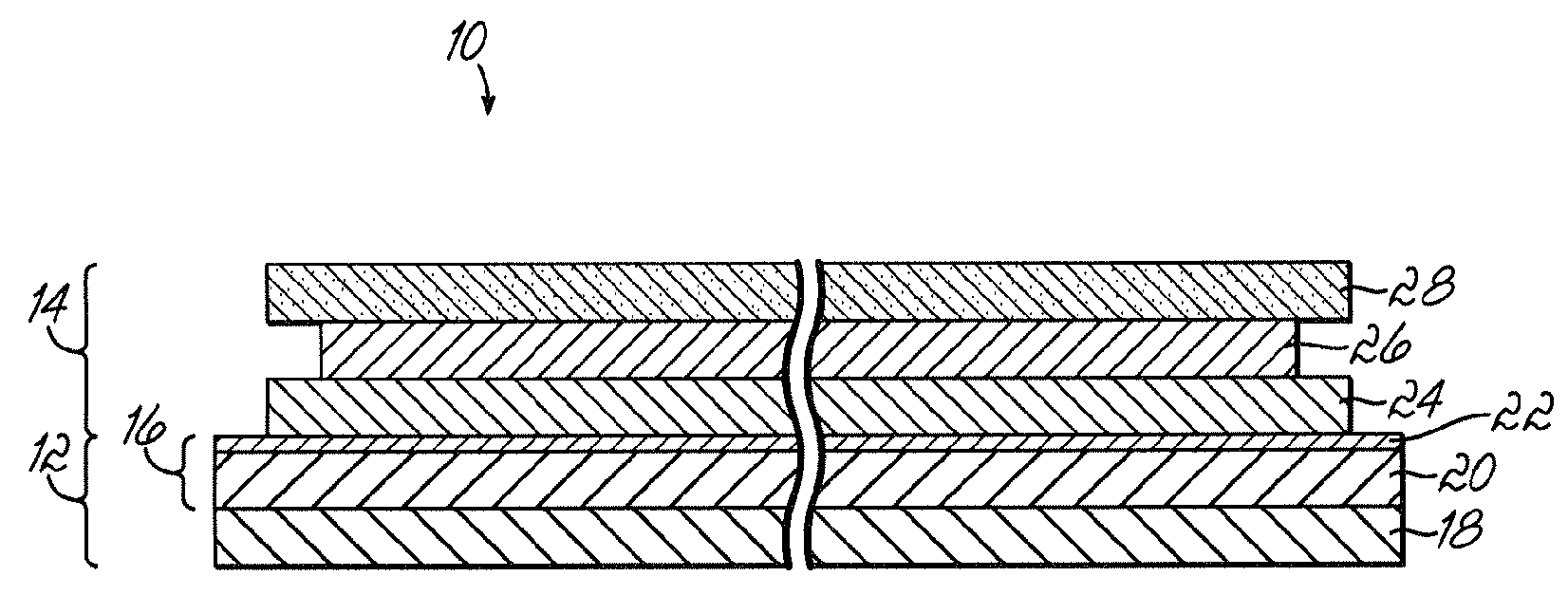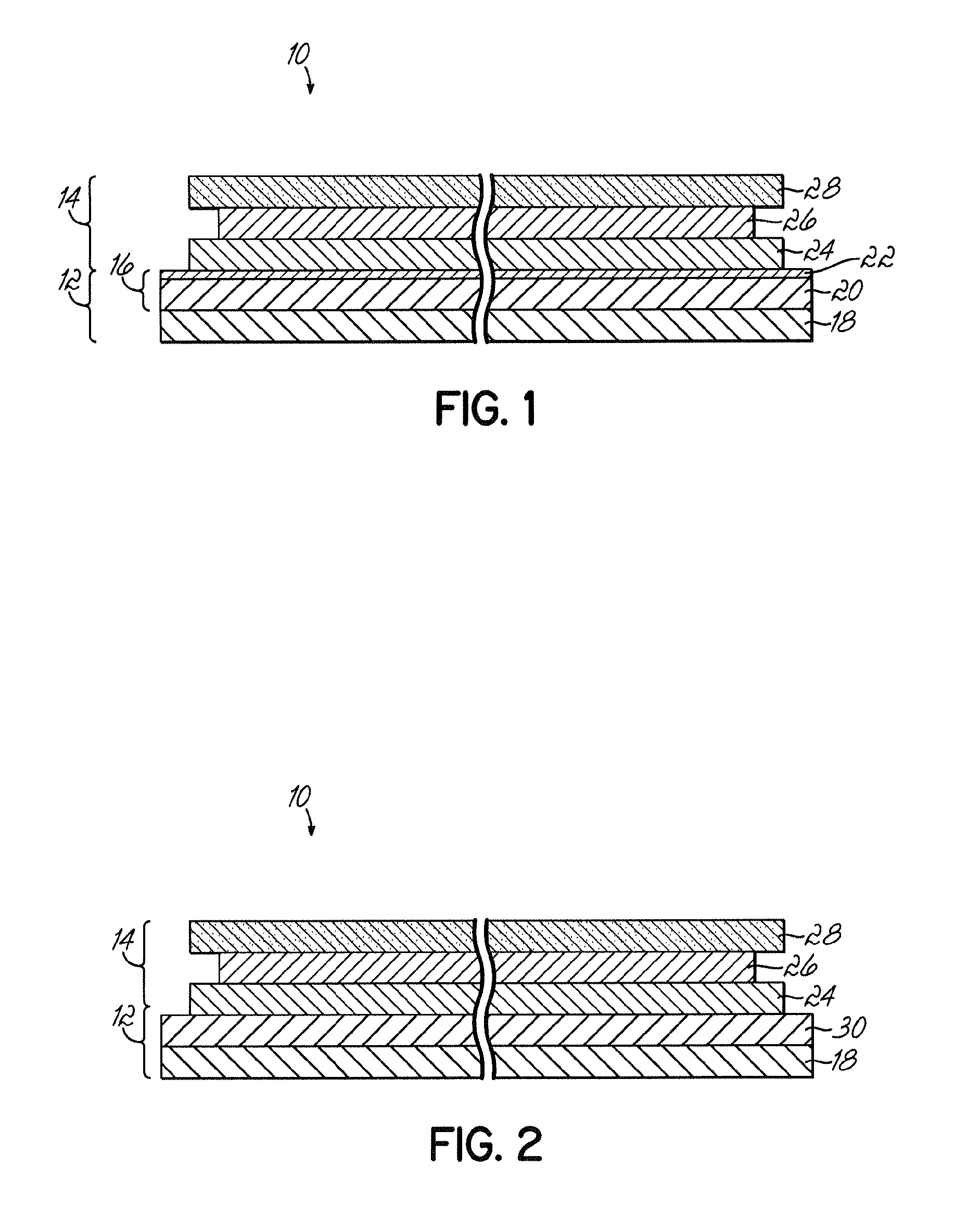Heat transfer label
a technology of transfer labels and labels, applied in the field of labels, can solve the problems of increased time, equipment, cost, and inability to adhere to labels, and achieve the effect of elimination of surface pretreatmen
- Summary
- Abstract
- Description
- Claims
- Application Information
AI Technical Summary
Benefits of technology
Problems solved by technology
Method used
Image
Examples
Embodiment Construction
[0013]Referring now to FIG. 1, there is shown a schematic section view of an embodiment of a heat transfer label 10 that is particularly well suited for use on untreated polyethylene, polypropylene, PET, or acrylonitrile surfaces, such as untreated high-density polyethylene containers, untreated low-density polyethylene containers, untreated high-density polypropylene containers, and untreated low-density polypropylene containers.
[0014]The label 10 includes a support portion 12 and a transfer portion 14. The support portion 12 may include a carrier sheet 18, which is typically paper or a similarly suitable substrate, and a release portion 16, which is overcoated onto the carrier sheet 18. The release portion 16 may include (1) a nonwax release layer 20, and (2) a skim coat 22. The nonwax release layer 20 may include a layer of polyethylene or a layer of polypropylene. Details of such a polyethylene layer are disclosed in U.S. Pat. Nos. 4,935,300 and 4,927,709, both of which are inco...
PUM
| Property | Measurement | Unit |
|---|---|---|
| softening point | aaaaa | aaaaa |
| density | aaaaa | aaaaa |
| Tg | aaaaa | aaaaa |
Abstract
Description
Claims
Application Information
 Login to View More
Login to View More - R&D
- Intellectual Property
- Life Sciences
- Materials
- Tech Scout
- Unparalleled Data Quality
- Higher Quality Content
- 60% Fewer Hallucinations
Browse by: Latest US Patents, China's latest patents, Technical Efficacy Thesaurus, Application Domain, Technology Topic, Popular Technical Reports.
© 2025 PatSnap. All rights reserved.Legal|Privacy policy|Modern Slavery Act Transparency Statement|Sitemap|About US| Contact US: help@patsnap.com


